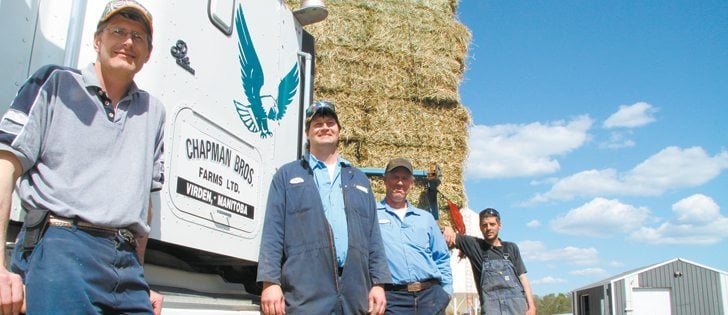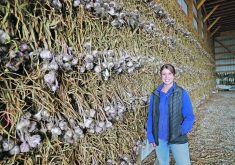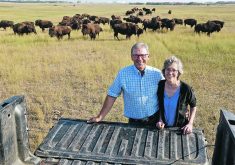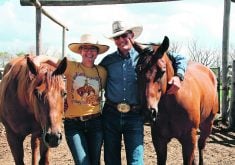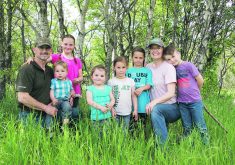Pooling money, brain power | Four partners and their employees work together to resolve problems and discuss ideas
VIRDEN, Man. — Driving into the yard at the Chapman farm for the first time is a bit confusing.
At two in the afternoon, six pick-up trucks were parked next to a machine shop and five white tractor-trailers were scattered about the farmyard south of Virden, Man. The scene resembled the home base for a small trucking company.
Yet, after driving further into the yard and seeing nine tractors, a feedlot, grain bins and a storage shed filled with hay bales, it became clear that this enterprise is a farm, albeit not a traditional one.
Read Also
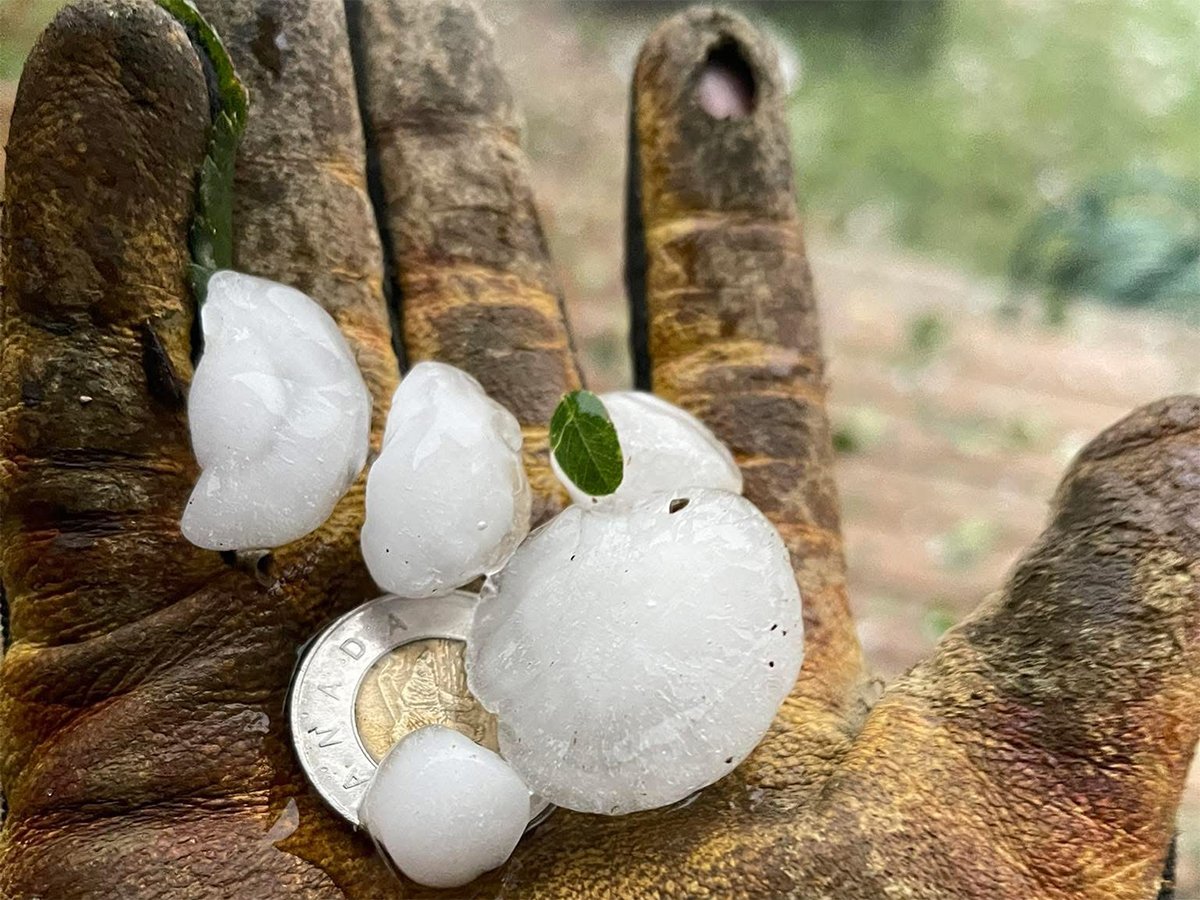
Half million acres of Alberta crops affected by massive hail storm
Late August hail storm catches farmers in prime harvest mode, damaging half million acres of crops in Alberta.
The owners of Chapman Bros. Farms Ltd. — Darren Chapman, his brother, Parry; cousin, Rob Chapman and his brother-in-law Jeff Elliott — are really partners in a business venture.
“It’s not the typical family farm. It comes from a family farm background. We’ve just evolved,” said Parry, who with Darren and Rob took over the farm from the previous generation, brothers George and Russell Chapman. “I’d call it more of a family run business.”
These days, the four partners in Chapman Bros. operate a farm business with more than 17,000 acres: 12,000 dedicated to canola, wheat, barley and soybeans and the remainder used for hay production and pasture.
In addition, they run a 500 head cow-calf operation and export hay to Florida, Texas and Wisconsin.
To do all that, they employ two full-time staff and hire seasonal workers from spring to fall.
In recognition of the scope and complexity of the operation, the Red River Exhibition honoured Chapman Bros. in 2010 as the Farm Family of the Year.
While Chapman Bros. may not be a typical family farm, Darren said it also isn’t a corporate farm.
“It is all family involved. It would be a different story if it was one company that owned all the land and they hired one person to manage it.”
The diversity of the operation means the Chapmans have enough work year round to retain highly experienced full-time employees.
For instance, Len Skelton, the farm’s first employee, has worked on the farm for nearly 40 years. Keeping skilled employees around has helped the Chapmans build up their business.
“One of the limiting factors going forward, for any farm … is the ability to retain employees,” Parry said as he reclined in a 30-year-old desk chair in a rustic office inside the machine shed, decorated with faux wood panelling, a few dozen repair manuals stacked on a shelf and a chalkboard with notes on scheduled farm tasks.
“We’ve come to the realization you can’t do everything yourself.”
In that spirit, the family members and business partners have also realized they’re better off working to-gether rather than running smaller farms on their own.
By pooling their capital, the partners are able to take advantage of economies of scale. They also benefit from having four brains evaluate an idea rather than one.
“You see it with neighbours who farm by themselves,” said Darren, while sitting inside a more modern office on the other side of the machine shed.
“They don’t have an opportunity to bounce ideas off somebody. We get the odd phone call from them, just looking for advice.”
As well, Elliott said the diverse knowledge of the four partners and their employees means that almost any on-farm issue can be resolved in-house.
“There’s always somebody here that can solve any problem.”
The partners’ ability to get along and take care of business was clearly evident by the tone of activity on the farm.
Parry was filling a sprayer with liquid fertilizer, Rob was spraying crops, Darren was managing an outgoing load of forage and employees were working at numerous tasks, but the pace was calm rather than chaotic.
Four family members running a business may have its advantages, but there are also risks. Four partners mean there can be four different opinions on how to best manage the farm.
The Chapmans steer clear of that pothole by specializing in certain aspects of the business. Darren runs the forage exports, Parry markets the crops, Rob handles spraying and harvesting and Elliott is responsible for the cattle.
However, it’s impossible to completely avoid conflict on certain decisions, so the partners vote when necessary and try not to hold a grudge if they’re on the losing side.
“It’s been pretty good. Some people have started off farming together and then can’t get along,” Darren said.
“(You’ve got) to accept the overall decision in the end. You’ve got to see it from three or four different ways.”


